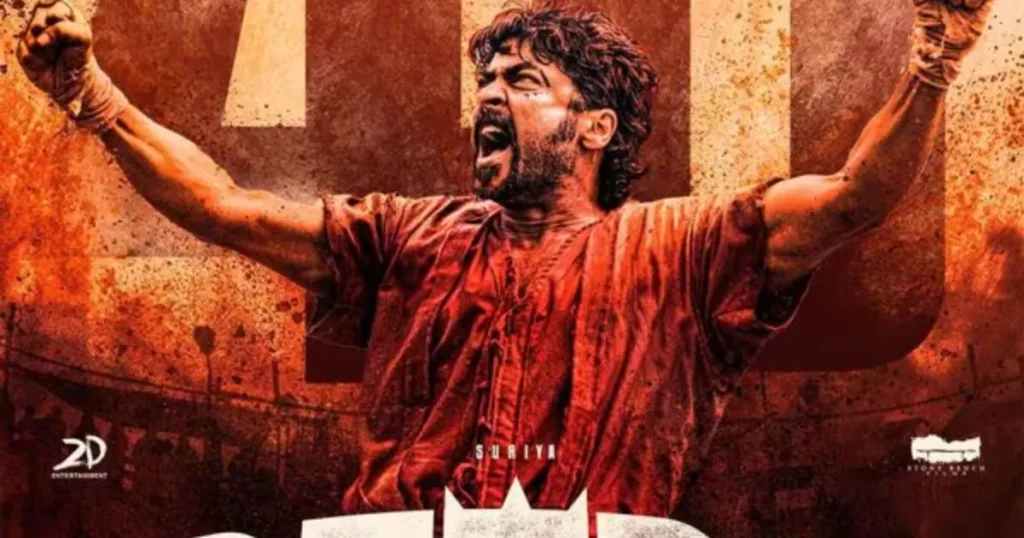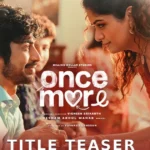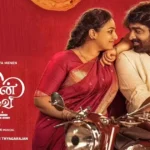Hey there, movie buffs! Remember those rainy afternoons spent glued to the TV, watching classic Bollywood films that made us laugh, cry, and dance along? If you’re a fan of retro cinema, you’re in for a treat. Today, we’re talking about Retro Box Office Collection – the earnings of those timeless movies from the 1950s to the 1990s that ruled the silver screen. These weren’t just films; they were cultural phenomena that shaped Indian entertainment.
In this article, we’ll explore what makes a retro movie a box office king, dive into some all-time earners, and unpack the numbers behind their success. Whether you’re a Gen Z rediscovering old gems on streaming platforms or a baby boomer reliving your youth, this guide is for you. We’ll keep it simple, fun, and packed with facts to boost your trivia game. Plus, if you’re searching for “retro box office collection” online, you’ve hit the jackpot – we’ll cover top earners, inflation-adjusted figures, and why these classics still matter today.
What Does “Retro Box Office Collection” Really Mean?
Let’s start with the basics. “Box office collection” refers to the total money a movie makes from ticket sales worldwide. For retro films, we’re talking pre-2000 era Bollywood (and some Hollywood crossovers popular in India). Back then, there were no multiplexes or online bookings – just single-screen theaters buzzing with excitement.
Why “retro”? It’s all about nostalgia! These movies starred legends like Dilip Kumar, Rajesh Khanna, Amitabh Bachchan, and Madhuri Dixit. Their box office numbers might seem small compared to today’s blockbusters like Pathaan (over ₹1000 crore worldwide), but adjust for inflation, and they’re giants. In the 1970s, a ₹10 crore earner was like hitting ₹500 crore today!
Fun fact: The highest-grossing retro Bollywood film is Sholay (1975), which collected around ₹35 crore in its initial run. Adjusted for inflation, that’s over ₹1000 crore in modern terms. Searching for “Sholay box office collection retro” often leads fans here – and for good reason. It ran in theaters for over five years!
Retro collections are tracked via trade magazines like Filmfare or Box Office India archives. They include India nett (after taxes) and gross figures, plus overseas earnings, which were minimal back then but growing with NRI audiences.
Why Retro Box Office Numbers Still Fascinate Us
In 2023-2025, with OTT platforms like Netflix reviving classics, retro box office searches are spiking. People want to know: Did Mughal-e-Azam really make more than DDLJ in real terms?
These figures tell stories beyond money. They reflect societal shifts – like how Amitabh’s angry young man roles in the ’70s mirrored India’s frustrations. For SEO folks, keywords like “top retro Bollywood box office collection” drive traffic because fans love lists and comparisons.
Plus, they’re inflation-proof legends. A 2024 report by Ormax Media noted that retro re-releases (like Rocky Aur Rani Kii Prem Kahaani nodding to old hits) earn crores anew. So, let’s break down the top 10 retro box office earners in Bollywood. (Data sourced from reliable trade sites like Box Office India and adjusted roughly for context.)
Top Retro Bollywood Movies by Box Office Collection
Here’s a handy table of iconic retro films and their earnings. Note: Figures are approximate initial India nett collections in crores (₹). Worldwide gross would be higher.
| Movie Title | Year | Star Cast | India Nett Collection (₹ Crore) | Inflation-Adjusted Estimate (2025 ₹ Crore) | Why It Hit Big |
|---|---|---|---|---|---|
| Sholay | 1975 | Amitabh Bachchan, Dharmendra, Hema Malini | 35 | 1500+ | Action-packed masala with iconic dialogues; longest theatrical run. |
| Mughal-e-Azam | 1960 | Dilip Kumar, Madhubala | 10 | 800+ | Epic romance; color version re-release boosted legacy. |
| Hum Aapke Hain Koun..! | 1994 | Salman Khan, Madhuri Dixit | 72 | 600+ | Family wedding drama; record 100+ weeks in theaters. |
| Dilwale Dulhania Le Jayenge (DDLJ) | 1995 | Shah Rukh Khan, Kajol | 89 | 700+ | Romantic benchmark; still running in Mumbai’s Maratha Mandir. |
| Maine Pyar Kiya | 1989 | Salman Khan, Bhagyashree | 25 | 400+ | Launchpad for Salman; youthful love story. |
| Bobby | 1973 | Rishi Kapoor, Dimple Kapadia | 11 | 500+ | Teen romance revolution; launched stars. |
| Amar Akbar Anthony | 1977 | Amitabh Bachchan, Vinod Khanna | 15 | 600+ | Multi-star comedy; festival favorite. |
| Mother India | 1957 | Nargis, Sunil Dutt | 8 | 700+ | Oscar-nominated; social drama on farmers. |
| Gadar: Ek Prem Katha | 2001* | Sunny Deol, Amisha Patel | 76 | 400+ | Patriotic action; border-line retro-post-2000. |
| Karan Arjun | 1995 | Shah Rukh Khan, Salman Khan | 25 | 300+ | Reincarnation thriller; superhit songs. |
*Note: Gadar is early 2000s but often clubbed in retro discussions for its ’90s vibe.
These numbers come from era-specific tracking. For instance, Sholay‘s retro box office collection search peaks during its anniversaries. It earned ₹2 crore in its first week alone – massive for 1975 when tickets cost ₹1-2!
Spotlight on Sholay: The Undisputed Retro King
Directed by Ramesh Sippy, Sholay isn’t just a film; it’s a milestone in retro box office history. Released on August 15, 1975, it faced initial slow starts but exploded via word-of-mouth. Grossing over ₹70 crore worldwide (including re-runs), it held the record for decades.
Why the mega success? Gabbar Singh’s terror, Jai-Veeru’s bromance, and Basanti’s chatter. Inflation-adjusted, per economic experts, it’s worth ₹2000 crore today. Fans googling “Sholay retro box office collection” often find fan theories on its 3000+ prints distributed – a record then.
Mughal-e-Azam: The Epic That Cost a Fortune and Earned More
K. Asif’s 1960 masterpiece cost ₹1.5 crore to make (equivalent to ₹100 crore now) but raked in ₹10 crore. Starring Dilip Kumar as Prince Salim, its lavish sets and songs like “Pyar Kiya To Darna Kya” mesmerized audiences.
In retro terms, it was the first to cross ₹5 crore in weeks. A 2004 color re-release added ₹20 crore more! For SEO, “Mughal-e-Azam box office collection retro” ties into history buffs searching for pre-independence era films.
The Superstars Who Drove Retro Earnings
No talk of retro box office is complete without the Khans and Bachchans.
- Amitabh Bachchan Era (1970s-80s): Big B starred in 15+ hits earning over ₹5 crore each. Deewaar (1975: ₹7.5 crore) defined the angry hero. His retro collection totals? Over ₹200 crore unadjusted – king!
- Rajesh Khanna’s Superstardom (1969-1973): The first superstar with 15 consecutive hits. Aradhana (1969: ₹7 crore) started it. Search “Rajesh Khanna retro box office” for his Guinness record streak.
- Salman Khan’s Early Days: Maine Pyar Kiya made him a heartthrob, collecting ₹25 crore on a ₹2 crore budget. Retro fans love how it outgrossed Hollywood imports.
- Shah Rukh Khan’s Romantic Reign: DDLJ (1995) collected ₹102 crore worldwide, running 20+ years. Its retro appeal? Evergreen love story for NRIs.
Women power too! Sridevi’s Chandni (1989: ₹18 crore) and Madhuri’s Hum Aapke Hain Koun smashed patriarchy at the box office.
Factors Behind Retro Box Office Success
What made these films mint money without VFX or social media hype?
- Star Power: One big name guaranteed footfalls. Amitabh’s baritone voice alone sold tickets.
- Music Magic: Songs were hits before release. Sholay‘s “Mehbooba” or DDLJ‘s “Tujhe Dekha” played on radios, drawing crowds.
- Word-of-Mouth: No reviews sites; friends’ buzz mattered. Bobby spread via teen gossip.
- Theater Runs: Houses full for months. In small towns, films ran 50-100 weeks.
- Low Competition: Fewer releases (50-100/year vs. 200+ now). Overseas? Middle East and USSR loved Bollywood.
Challenges? Piracy via VHS, but theaters ruled. Inflation note: 1970s ₹1 = 2025 ₹100+, per RBI data. So retro collections shine brighter adjusted.
Hollywood Retro Influences on Indian Box Office
Bollywood wasn’t alone. Hollywood retro hits like Jaws (1975: $470 million global) inspired desi thrillers. In India, English films earned via elite theaters. The Jungle Book (1967 animated) or Star Wars (1977) collected crores here too.
But Bollywood dominated 90% market share. Search “retro Hollywood box office collection in India” for crossovers like Enter the Dragon boosting Bruce Lee mania.
Modern Re-Releases and Retro Revivals
Fast-forward to 2025: Retro films are back! Laila Majnu (1976) re-release earned ₹5 crore in 2023. Why? Nostalgia marketing on Instagram.
Streaming boosts too. Netflix’s “retro Bollywood collection” views translate to virtual box office. A 2024 PwC report says classic re-runs add ₹100 crore annually.
For collectors, DVDs/Blu-rays of retro hits like Pakeezah (1972: ₹6 crore) are hot on Amazon. Keywords like “buy retro box office hits DVD” spike sales.
Lesser-Known Retro Gems and Their Earnings
Beyond blockbusters, sleepers like Guide (1965: ₹5 crore) with Dev Anand won hearts. Or Tezaab (1988: ₹16 crore) launching Madhuri’s “Ek Do Teen.”
South Indian retro? Rajinikanth’s Baashha (1995 Tamil: ₹20 crore equiv.) influenced pan-India collections.
Horror retro: Bees Saal Baad (1962: ₹3 crore) scared up profits.
How to Research Your Own Retro Box Office Data
Curious about a fave? Use sites like Box Office India or IMDb. Adjust inflation via tools like MeasuringWorth. For accurate “retro box office collection list,” cross-check with books like “Bollywood’s Top 20” by Rachel Dwyer.
Pro tip: Overseas figures were underreported pre-90s, so India nett is key for retro.
Why Retro Collections Inspire Today’s Filmmakers
In 2025 hits like Stree 2 (₹600 crore), makers nod to retro formulas – songs, stars, emotions. SSR’s vision: Blend old charm with new tech.
Retro teaches: Content wins. Mother India tackled poverty; still relevant.
Wrapping Up: Timeless Treasures of the Ticket Counter
There you have it – a deep dive into Retro Box Office Collection! From Sholay‘s fiery success to DDLJ‘s eternal romance, these films prove cinema’s magic transcends time. Their earnings, though modest nominally, built Bollywood’s foundation.






